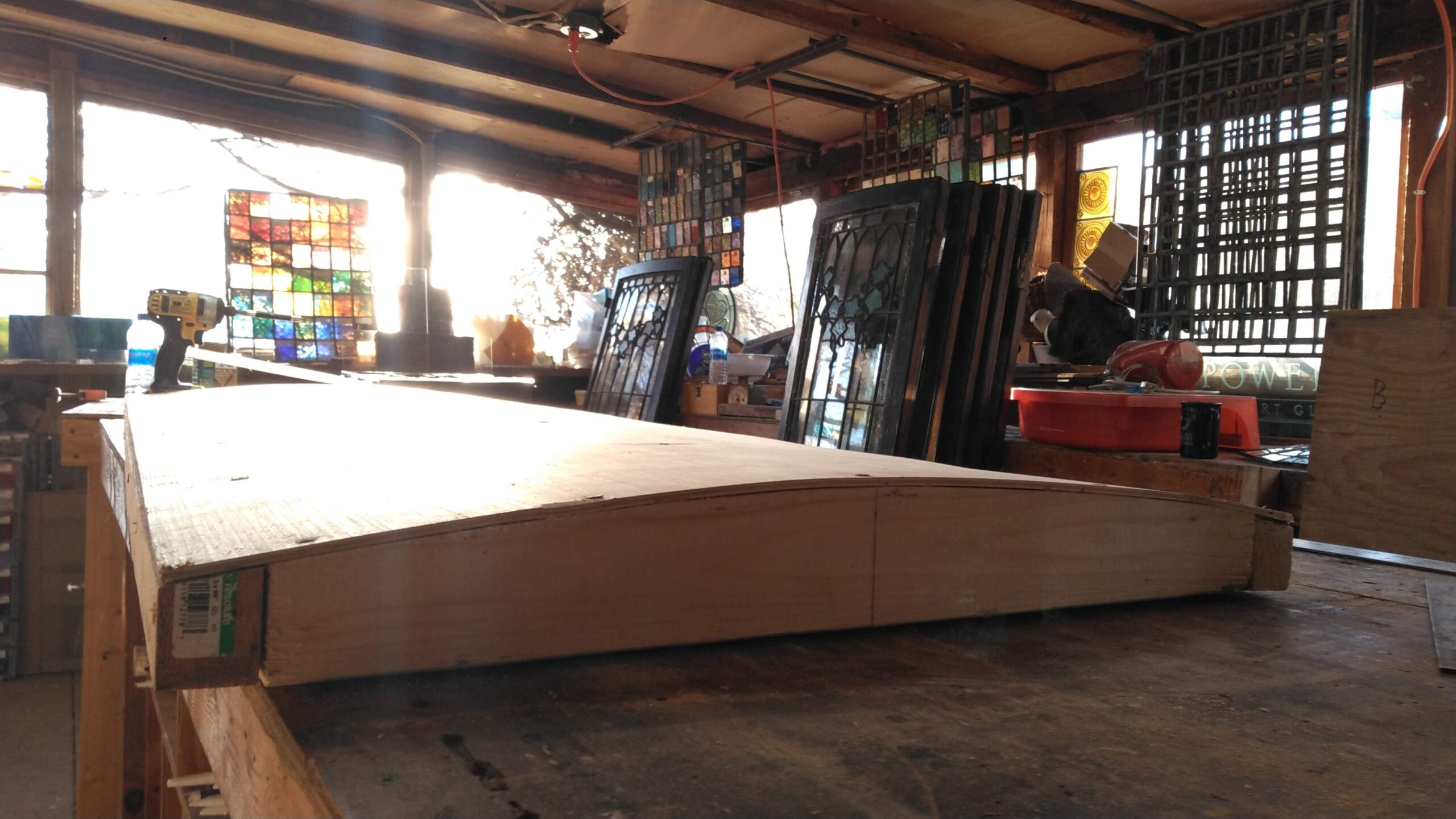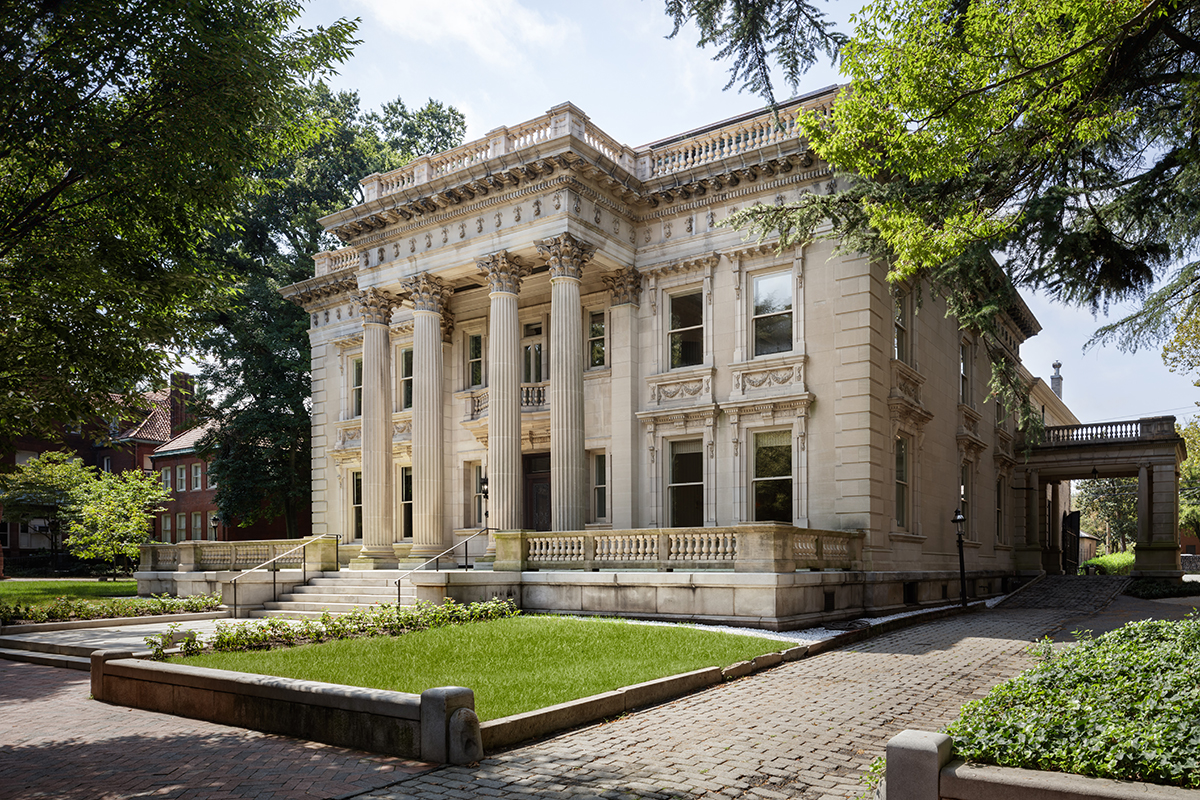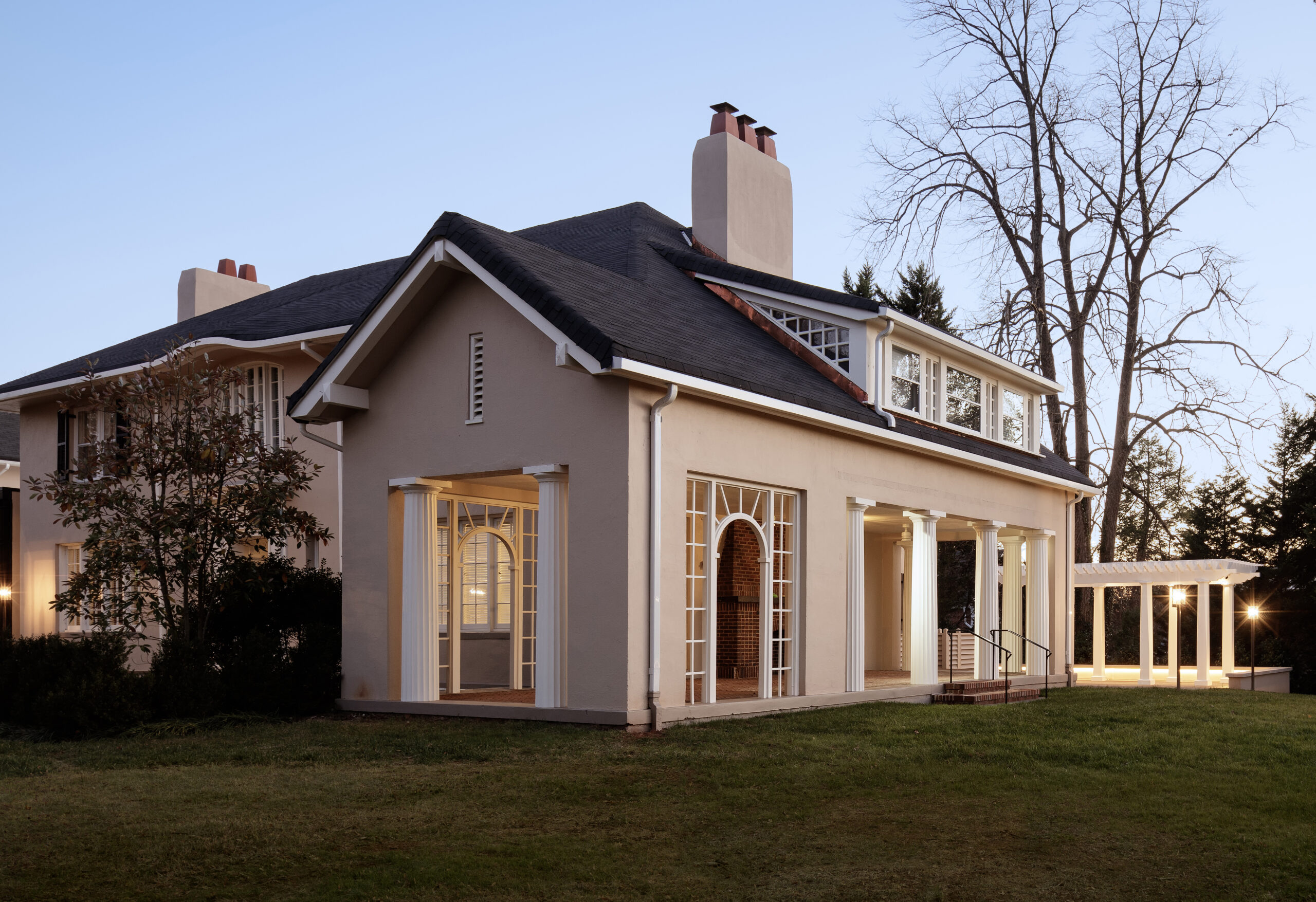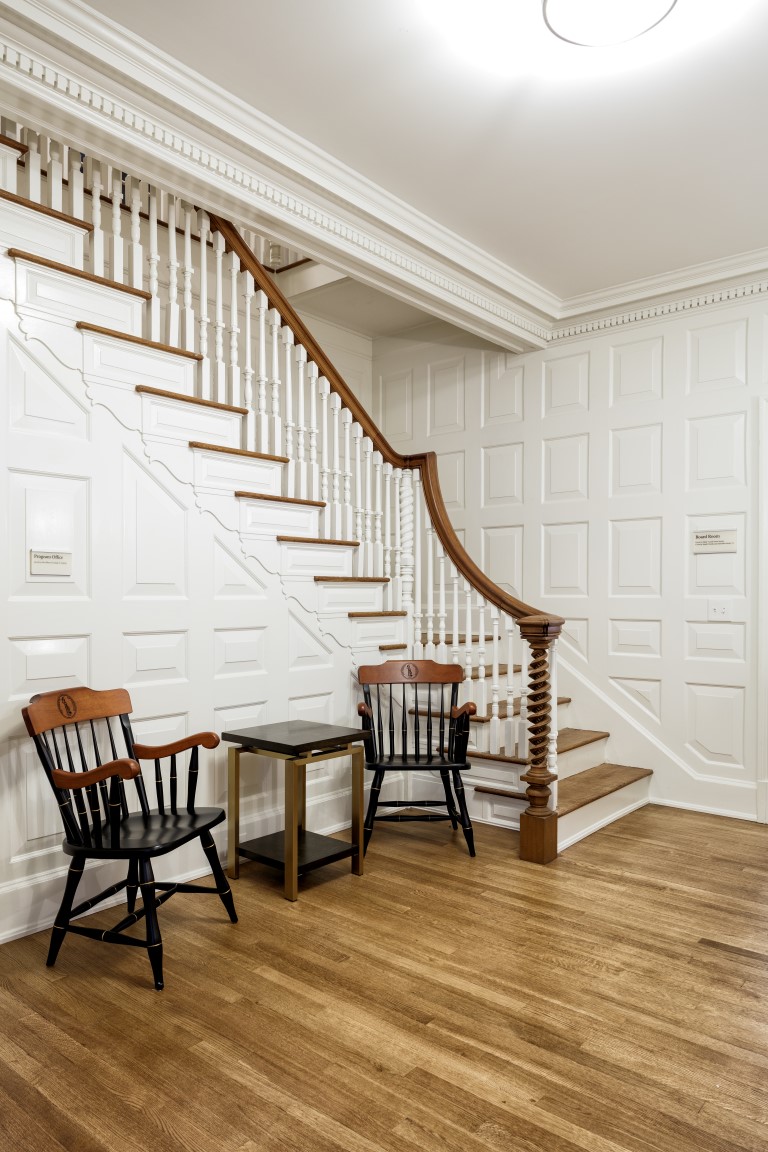When Virginia Commonwealth University decided to embark on a rehabilitation of the Scott House, it was evident that the stained glass windows of the ornate Breakfast Room would require specialized repairs. The deflection of the glass was to the point of physically separating from the metal matrix that joins the pieces of glass, known as cames, posing a threat to the physical integrity of the windows. Adding a layer of complexity to the challenge was the fact that each window was curved and the cames were zinc, not the typical lead.
More »Case Study: Transforming VCU’s Scott House
The Scott House, completed in 1911 and more than 18,000 square-feet, was designed by Richmond architecture firm Noland and Baskervill. One of the grandest residences of its day, it was built for Frederic William Scott and Elizabeth Strother Scott in a Beaux Arts style. The design references Newport’s Marble House, which in turn looks to the Petit Trianon at Versailles. The exterior is Tennessee limestone and terra cotta on the first and second floors, with a copper-clad, recessed third floor, as well as a copper-clad conservatory on the first floor. A rear service wing is made of buff brick. According to the National Register, its interior “can be understood as an architectural museum, with rooms in many different styles.”
More »The Essex: Via’s Home
A case study by Jacqueline Childress, Associate IIDA, LEED® Green Associate, Andrew McKinley, AIA, LEED AP®, and Haley Morgan
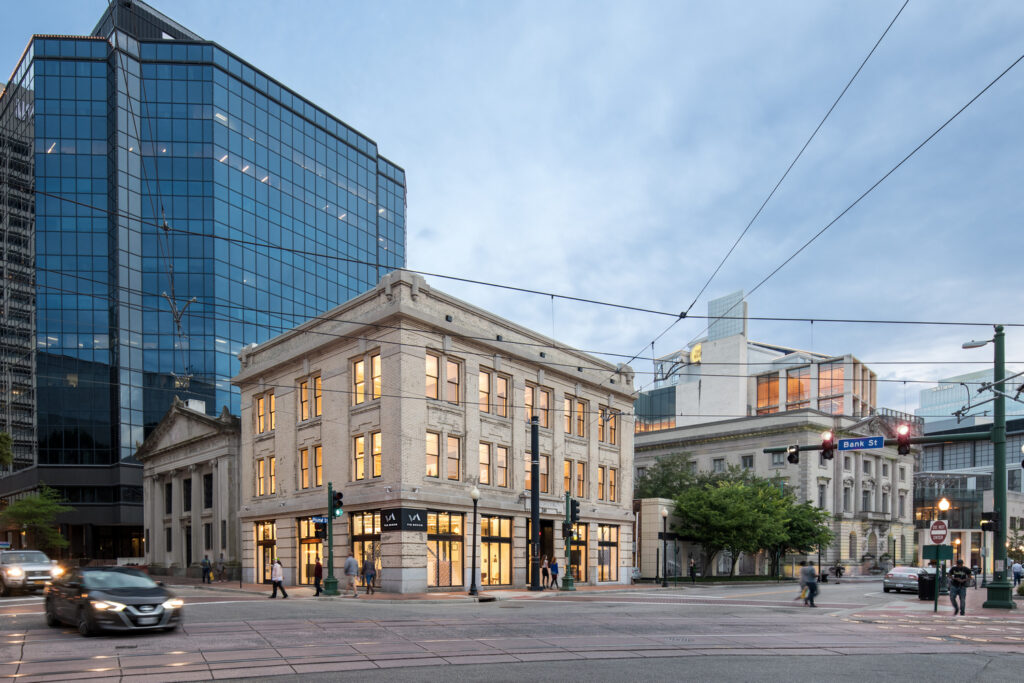
Architecture is a design process focused on creating spaces for people. The building itself, formed of solid materials like steel and masonry, forms a shelter for people to occupy. But the interiors are what connect to human emotions, create a sense of place, and establish the identity for the building’s functions.
More »Notes on the Williamsburg Experiment
There’s an irony in writing a true account about the living history museum at Colonial Williamsburg. Its eponymous foundation and its curators have grappled with the same two questions for generations: Whose histories do we tell and how shall we recreate them? Today, Williamsburg faces a new set of questions beyond the facts recorded in the governours’ ledgers: Whose truths do we tell and how shall we present them in concert together, especially in light of the 1619 Project, the Black Lives Matter movement, and Critical Race Theory, whose progenitors demand more than new lines of inquiry. They demanded action. Williamsburg has made clear efforts to juggle archaeology with interpretation, and it has also attempted to address the indictment of sophistry among its critics, which are legion. But, can the sites of Williamsburg’s 301 acres respond to our moment now?
In our post-vaccination world, Colonial Williamsburg is worth revisiting this summer, as I did in June—not for what its evidence reveals about Colonial America, but for our opportunity to change the course of what I’ll call the Williamsburg Experiment, ongoing for more than 380 years.
More »A Simulated Thatched Roof
An odd feature caught the eye of the team at Glave & Holmes Architecture while rehabilitating the historic Brody Jewish Student Center in Charlottesville. This very artistic house on University Circle, historically the domain of UVA professors, was roofed with ordinary asphalt shingles, but the hips and overhangs were softly curved, lending the house a very distinctive appearance in this otherwise safely Jeffersonian Charlottesville neighborhood.
More »Restoring a Helical Newel Post
“One recent project found us briefly stumped over a battered ornamental newel post. We did some research and found out a lot more than the building owner expected. Glavé & Holmes Architects’ Project Manager Linda Coile, working with our in-house preservation specialists, was able to turn it into a miniature triumph of sorts.“
More »A New Masque for Shakespeare’s Home
MTFA Architecture’s award-winning conservation work for the Folger Shakespeare Library revealed clues about how similar marble-clad buildings from the WPA-era could be renewed for new generations of visitors.
More »
